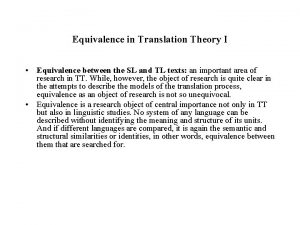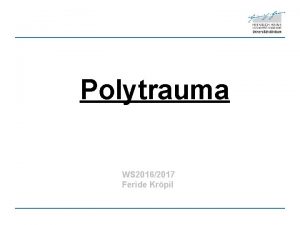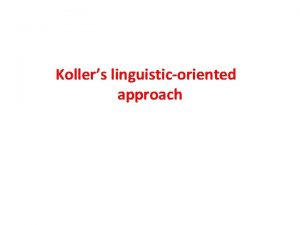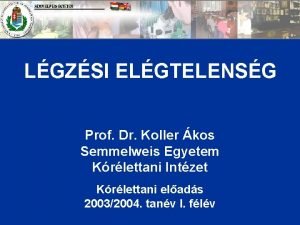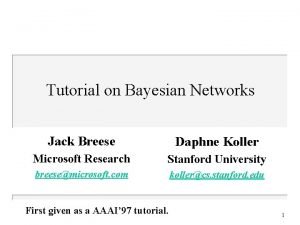Kollers linguisticoriented approach Using a linguisticoriented approach Koller










- Slides: 10

Koller’s linguistic-oriented approach

Using a linguistic-oriented approach, Koller (1995: 196 -7), being under the influence of Nida’s science of translation, states that there should be an equivalence relation between the source-language text and target-language text.

He makes a distinction between equivalence and correspondence: correspondence falls within the field of contrastive linguistics, which compares two language systems and describes contrastively differences and similarities. Its parameters are those of Saussure's langue. Examples given by Koller are the identification of false friends and of signs of lexical, morphological and syntactic interference. .

Equivalence: relates to equivalent items in specific ST-TT pairs and contexts. The parameter is that of Saussure's parole. Koller points out that, while knowledge of correspondences is indicative of competence in the foreign language, it is knowledge and ability in equivalences that are indicative of competence in translation.

However, the question still remains as to what exactly has to be equivalent. In an attempt to answer this question, Koller goes on to describe five different types of equivalence:

1. Denotative equivalence. This is related to the extra linguistic circumstances conveyed by the source text. 2. Connotative equivalence. This is related to lexical choices, especially between nearsynonyms. The connotative values are conveyed by the source text via the mode of verbalization.

3. Text-normative equivalence. This is related to parallel texts in the target language. In other words, it aims at following the norms and patterns required by each text or by each language in a variety of communicative situations. 4. Pragmatic equivalence. This is oriented towards the receiver of the text or message, and tries to create a given effect on the TL receiver in the same way the source language does on the source language receiver. This resembles Nida’s dynamic equivalence.

5. Formal equivalence. Unlike Nida’s formal equivalence this type of equivalence is related to the form and aesthetics of the text including word plays and the individual stylistic features of the ST. This is achieved by creating an analogous form in the TL, using the possibilities of the target language in relation to its forms or even creating new ones.

Despite its importance in translation, Koller believes that equivalence is relative. It is determined by a series of linguistic-textual and extra-linguistic factors and conditions which are partly contradictory and frequently difficult to reconcile with one another.

He adds that the equivalence-oriented approach seems to be of little importance to historical translation studies, and it is used in the analysis of contemporary translations with some cases of text reproduction and text production presenting difficulties for systematization

